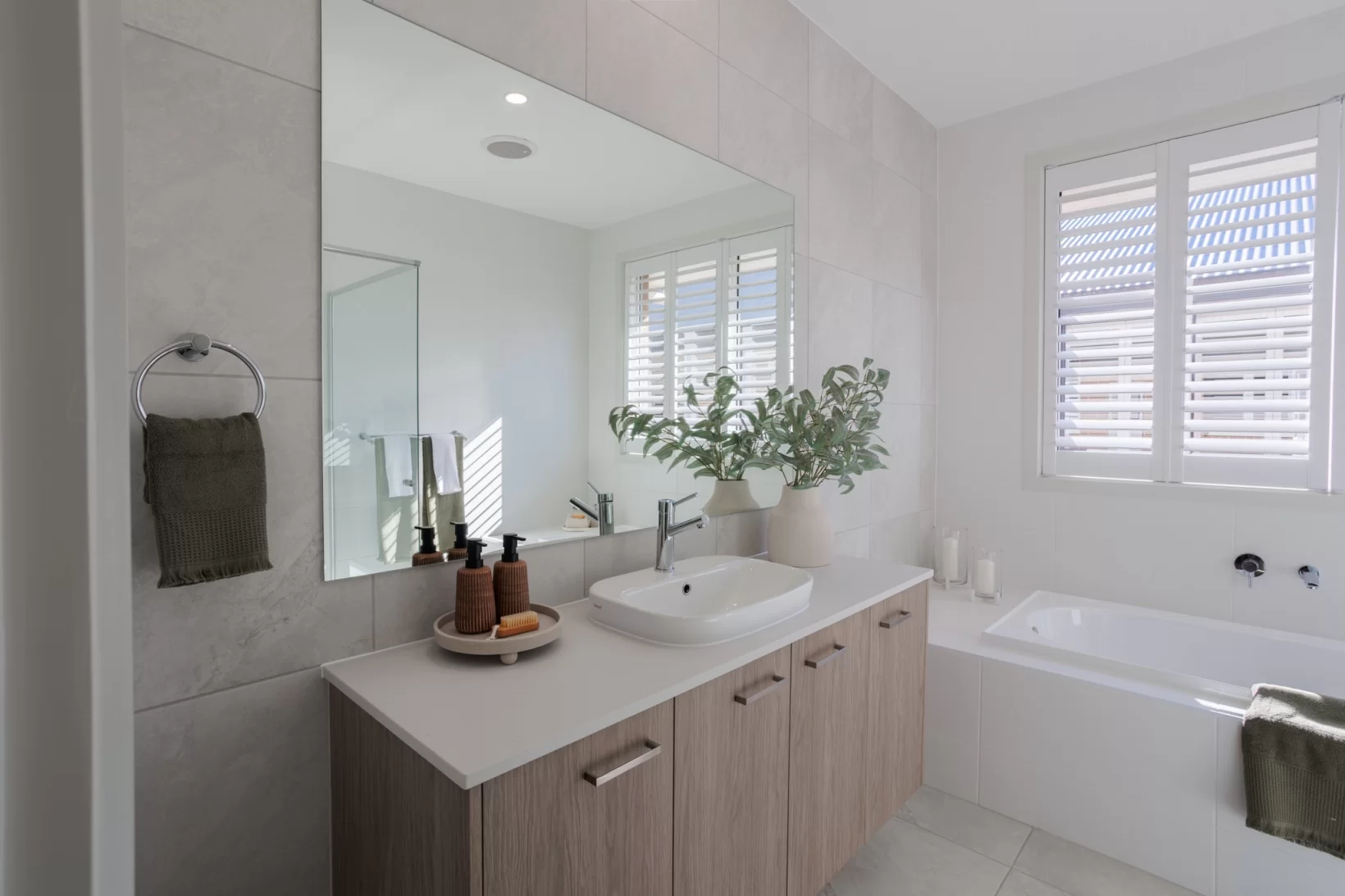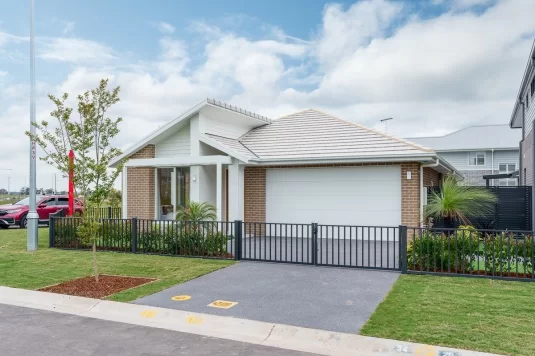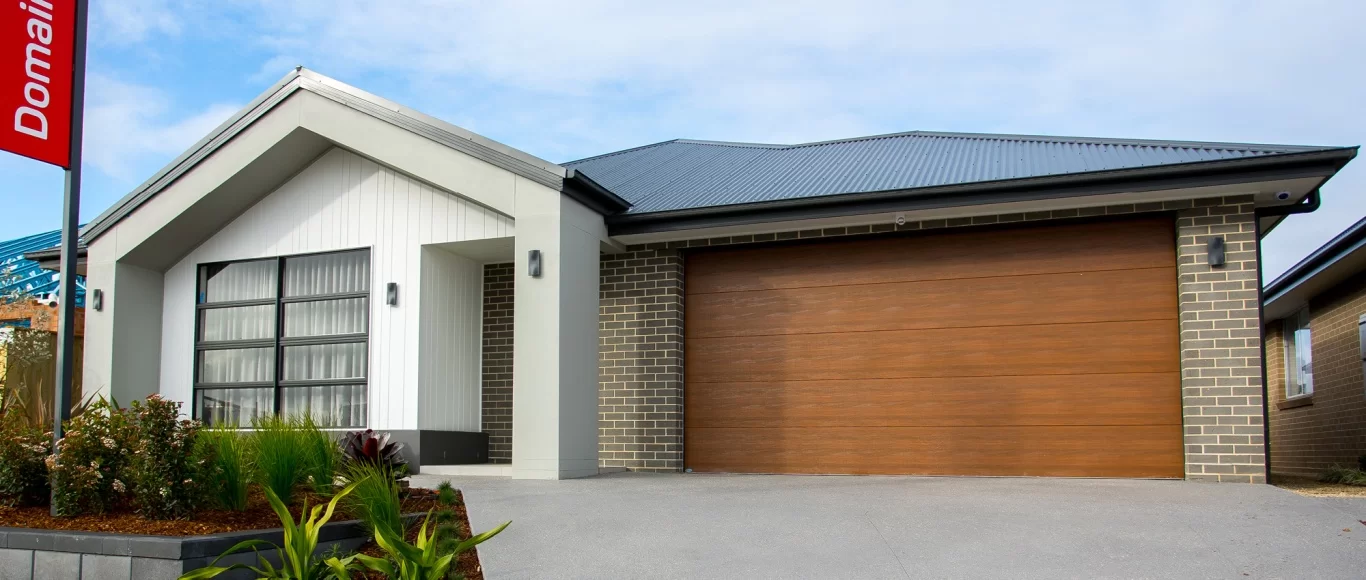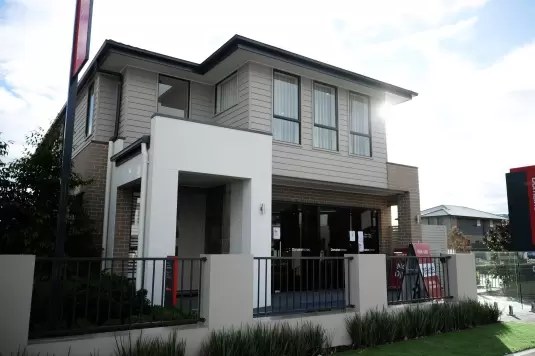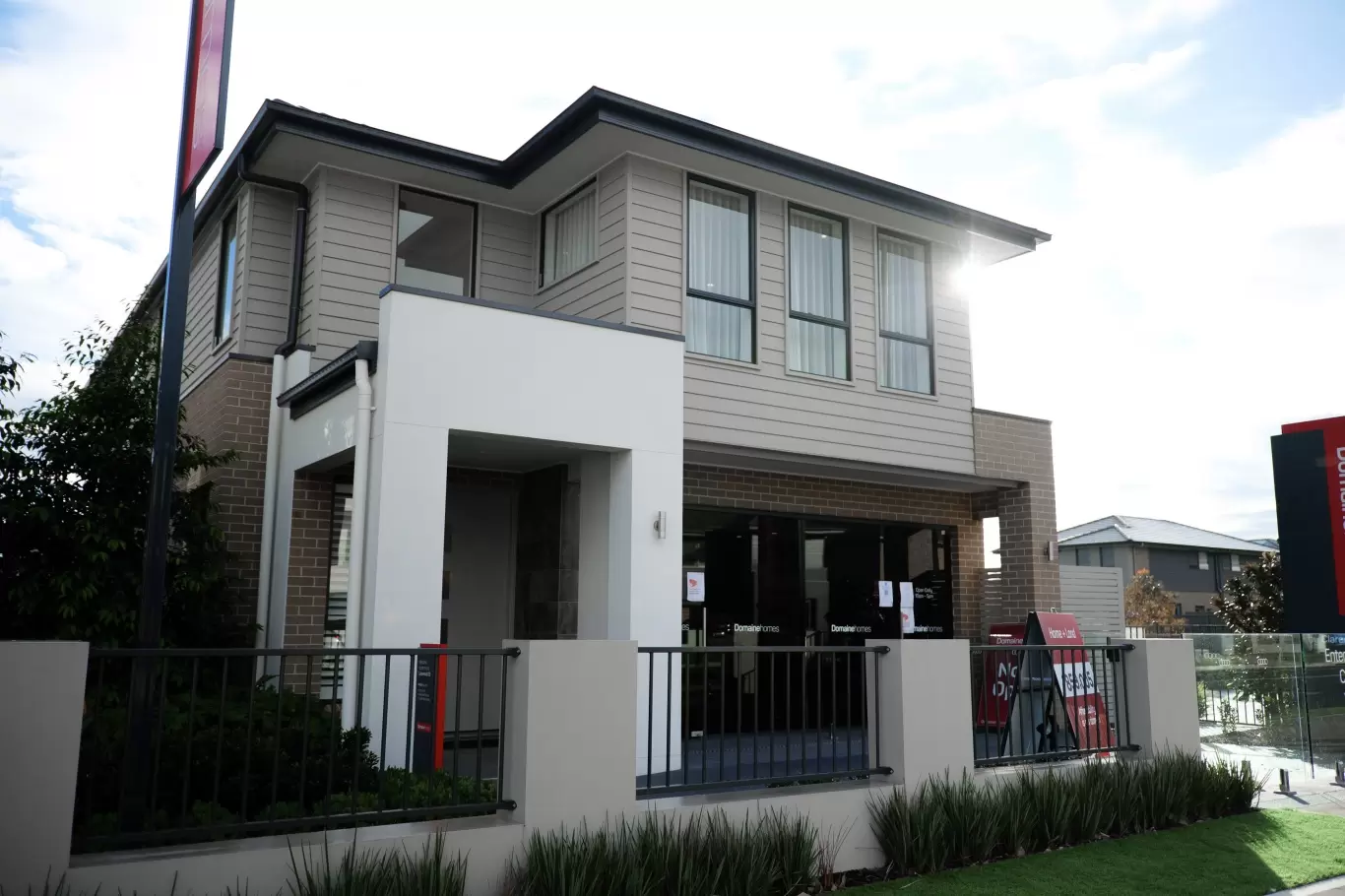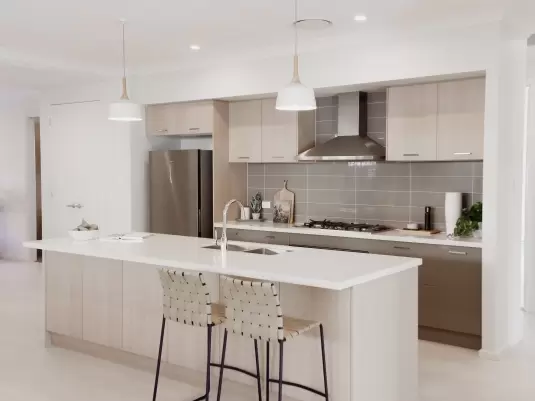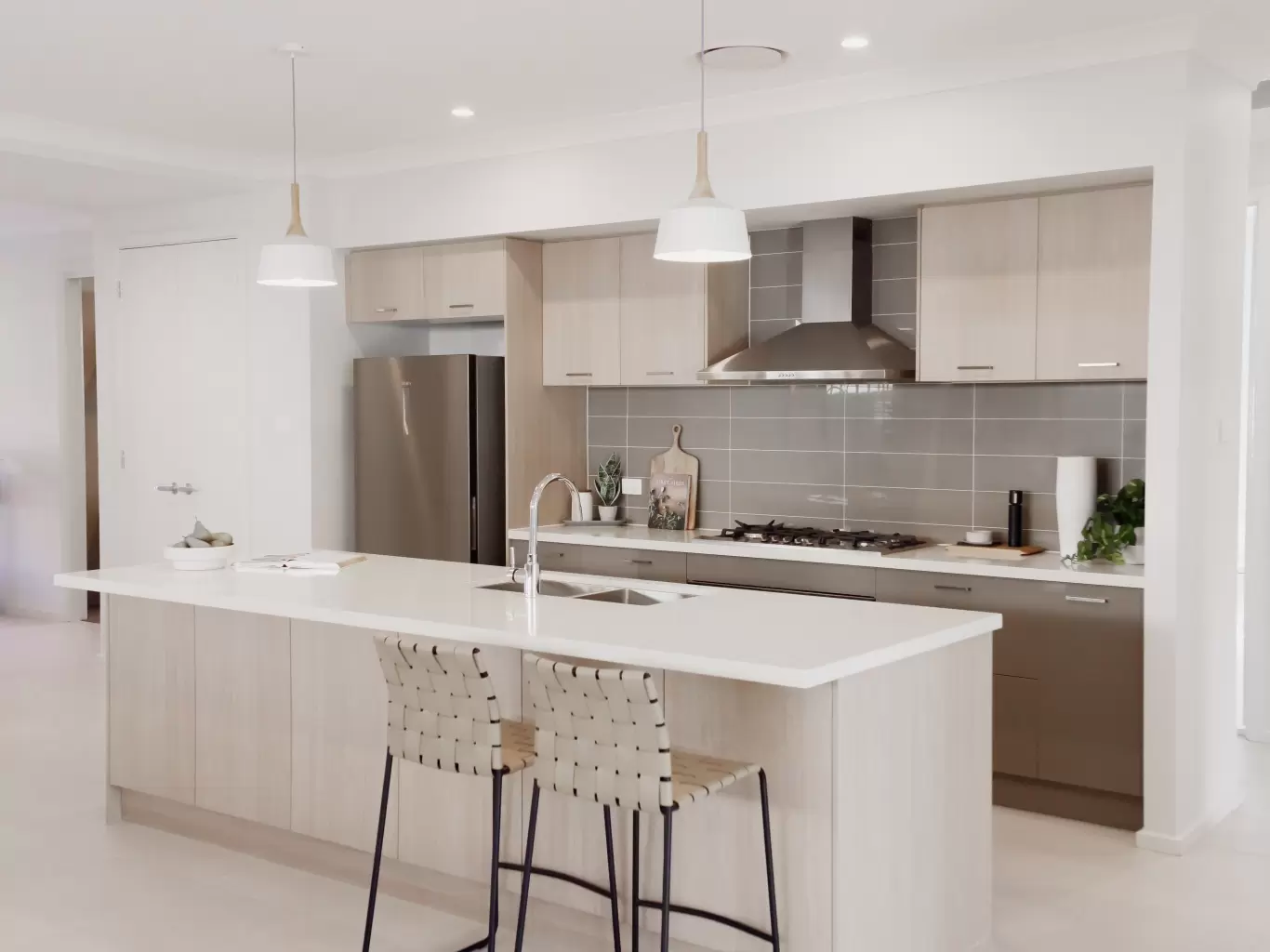In 2025, building a truly energy-efficient home in Australia isn't just smart, it's becoming essential. With energy costs soaring by 27% in the past three years and extreme weather events on the rise, the decisions you make during construction will transform your comfort and finances for decades to come.
The truth? Most Australian homes built today still utilise outdated energy principles from the 1990s. These homes are absolutely leaking money through poor insulation, improper orientation, and inefficient materials. A perfectly designed energy-efficient home can slash your energy bills by up to 80% while delivering superior comfort year-round.
This guide unleashes everything learned into practical steps that maximise results specifically for Australian conditions in 2025. We'll cover essential location considerations, breakthrough insulation techniques, passive solar design principles that deliver real results, and how to navigate Australia's latest energy efficiency standards.
Whether you're building your first home, planning an energy retrofit, or organizing for the future, these insights will help you create a home that's comfortable, sustainable, and financially efficient.
Here's the ultimate truth to understand: energy efficiency isn't something you add to a house later, it must be designed in from the beginning. And that's exactly what we're about to dive in and discover how to implement.
Master the Basics of Energy Efficient Building
Energy efficiency starts with smart design: Location, insulation, and passive solar principles form the foundation
Right choices reduce costs: Proper planning can cut energy use by up to 30%
Best practices evolve: 2025 standards emphasize holistic approaches to efficiency
1. Choose the Right Location
The location of your house directly impacts its energy efficiency. In Australia, where climate zones vary dramatically from tropical north to temperate south, site selection is absolutely critical. Smart positioning can transform your home's performance, reducing heating and cooling needs by up to 30%.
Site orientation is your first major decision. In Australia's southern hemisphere, north-facing homes capture maximum winter sunlight. This natural solar gain reduces heating costs during colder months. Position your main living areas on the northern side to maximise this free warmth. Windows placed on the north side should be larger than those on the south, which helps control heat loss during winter.
The local climate shapes every aspect of efficient design. In hot, humid regions like Far North Queensland, elevated homes with cross-ventilation work best. In contrast, homes in Victoria or Tasmania need more insulation and thermal mass to retain heat. Site elevation matters too - homes built on slopes often benefit from natural air movement patterns that can be harnessed for cooling.
Wind patterns affect natural cooling options. Understanding prevailing breezes helps you position windows for cross-ventilation. In coastal areas, sea breezes can provide significant cooling effects when properly utilised. Consider working with a local architect who understands regional wind patterns - they can help you organise windows and openings to maximise airflow during summer months.
Microclimate Considerations
Beyond regional climate factors, every building site has its own microclimate. Nearby trees, water bodies, and neighboring structures all influence temperature and airflow. Deciduous trees on the north side provide summer shade while allowing winter sun to shine through. Dense evergreens on the south side block cold winter winds. These natural features can reduce heating and cooling needs by 10-15%.
2. Invest in Insulation Solutions
Insulation is the most cost-effective way to improve energy efficiency. According to the World Economic Forum, energy-efficient renovations in existing buildings can cut energy use by up to 30%, creating both financial and environmental benefits. This translates to lower bills and reduced carbon emissions.
Modern insulation technology has advanced significantly in 2025. New materials combine high performance with environmental benefits. Aerogel insulation, once used primarily in aerospace applications, has become more affordable for residential use. With an R-value three times higher than traditional materials, it allows for thinner wall profiles without sacrificing performance. Bio-based insulations made from hemp, wool, and recycled textiles offer excellent thermal properties while capturing carbon.
The effectiveness of insulation depends on where it's installed. Roof and ceiling insulation is the ultimate priority, as 25-35% of heat loss occurs through these areas. In Australia's climate, R-values between 4.1-6.3 are recommended for ceilings, depending on your climate zone. Walls should be next on your list, with recommended R-values of 2.8-3.8. Floor insulation is essential for elevated homes, with R-values of 2.5-3.5 recommended.
Installation Quality Matters
Even the best insulation performs poorly if installed incorrectly. Common problems include gaps around electrical outlets, compression in tight spaces, and moisture damage. Professional installation ensures these issues are avoided. The small premium paid for expert installation typically pays for itself within 2-3 years through energy savings.
In 2025, building wrap technologies have improved dramatically. These membranes control air leakage while allowing water vapor to escape, preventing condensation problems. When combined with proper insulation, they create a complete thermal envelope. This strategy stops both conductive heat transfer (through materials) and convective heat transfer (through air movement).
3. Leverage Passive Solar Design Principles
Passive solar design harnesses the sun's energy without mechanical systems. This approach costs nothing to operate and lasts the lifetime of the building. The core principle is simple: capture solar heat when needed and block it when not.
Effective solar design starts with the building envelope. In Australia, the perfect home has its long axis running east-west, maximising northern exposure. This orientation allows winter sun to penetrate deep into living spaces while minimizing exposure to harsh eastern and western sun in summer. As building efficiency expert Gunnar Myhre notes, "Standards are crucial as they give a comprehensive and common framework for calculating the energy performance of single components as well as whole buildings."
Window placement and design significantly impact energy efficiency. North-facing windows should cover 15-20% of the floor area in most Australian climate zones. These windows capture winter sun but need appropriate shading to block summer heat. Eaves or pergolas calculated to the correct depth block high summer sun while allowing lower winter sun to enter. High-performance double or triple glazing with low-e coatings reduces heat transfer, with today's best windows having U-values below 1.0 W/m²K.
Thermal Mass: The Heat Battery
Thermal mass acts like a battery for heat energy. Materials with high thermal mass, concrete, brick, stone, and water, absorb heat during the day and release it slowly at night. This property moderates temperature swings, reducing the need for mechanical heating and cooling.
In 2025, phase-change materials (PCMs) represent the cutting edge of thermal mass technology. These substances change from solid to liquid at specific temperatures, absorbing or releasing large amounts of heat in the process. PCMs can be incorporated into walls and ceilings, providing thermal mass benefits without heavy construction. Early adopters report energy savings of 15-25% compared to conventional construction.
The placement of thermal mass is critical. In cold climates, locate thermal mass where it receives direct sunlight. In hot climates, shield it from direct sun but expose it to cool night air. Always insulate thermal mass from the outside to prevent heat loss or gain through the building envelope.
What is the Most Energy-Efficient Home Construction?
The most energy-efficient home construction combines several approaches, with no single "best" solution for all climates. However, data shows that well-designed timber-frame construction with high-performance insulation consistently performs well across Australia. These homes achieve energy ratings of 8+ stars when properly designed.
For manufactured homes, modular construction has made significant advances. Factory-built modules with precision-engineered components minimise thermal bridges and air leakage. The best manufactured homes in 2025 incorporate structural insulated panels (SIPs) that integrate structure and insulation. These homes can achieve energy ratings comparable to site-built homes at lower cost.
From a cost perspective, simple rectangular designs with 7+ star energy ratings offer the best balance between efficiency and construction costs. Complex shapes increase external surface area, leading to greater heat transfer. The most efficient homes optimise the ratio of floor area to external surface area while maintaining good solar access.
As for energy sources, rooftop solar with battery storage has become the most efficient option for most Australian homes in 2025. Heat pump technology for both hot water and space conditioning complements solar generation, with coefficient of performance (COP) ratings now exceeding 5.0 in the latest models. This means they produce five units of heating or cooling for each unit of electricity consumed.
The energy-efficient building market has grown substantially, reaching $135.6 billion in 2024 and projected to grow to $145.84 billion in 2025. This investment reflects growing recognition that energy efficiency represents the lowest-cost approach to reducing both carbon emissions and household energy bills.
Sustainable Building Materials in Australia: Top Choices
Locally-sourced materials reduce transportation emissions by up to 70% compared to imported alternatives
Recycled materials can lower construction costs by 15-30% while cutting waste sent to landfills
Smart home systems can reduce household energy consumption by 20-40% when properly integrated
1. Opt for Locally Sourced Materials
Using building materials that come from nearby sources is not just perfect for the environment, it's a smart strategy for your build. When you choose local materials, you're significantly reducing the carbon footprint from transportation. The University of Melbourne's 2024 study revealed that locally sourced materials can slash transportation-related carbon emissions by up to 70% compared to imported options.
Australian builders have access to exceptional local options that are designed to perform in our unique climate conditions. Sustainable timber from certified Australian forests is a premier choice for your home. These forests follow strict replanting protocols, ensuring the wood you're using is replaced with new growth. Australian hardwoods like spotted gum and blackbutt offer natural termite resistance and impressive durability, often lasting more than 50 years with proper maintenance. These woods are perfectly adapted to Australia's harsh conditions and feature natural fire-resistant properties that make them ideal for bushfire-prone areas.
Carbon Footprint Reduction
Beyond the obvious transportation benefits, local materials generally have a lower overall carbon footprint. The shorter supply chain means fewer emissions from multiple handling points, warehousing, and distribution centers. The Australian Sustainable Building Materials Association reports that using local materials can reduce the embodied carbon in construction by 15-25%. This reduction becomes significant when multiplied across the thousands of new homes built in Australia each year.
The Green Building Council of Australia (GBCA) reported that 2023/24 marked a year of unprecedented progress for the industry, with record levels of demand for sustainability certifications. This trend has continued into 2025, with over 1000 buildings, fitouts, and precincts being awarded Green Star certification for their sustainability credentials in a single year, demonstrating the widespread adoption of sustainable materials and practices.
Impact on Local Economy
When you choose locally produced materials, you're actively supporting Australian jobs and businesses. The economic multiplier effect of buying local means that for every dollar spent on locally sourced building materials, approximately $2.80 recirculates in the community through wages, services, and further local purchasing. The Australian Construction Industry Forum estimates that increasing local material use by just 10% could create over 15,000 additional jobs in manufacturing and supply sectors.
Regional areas particularly benefit from this approach. In areas like Tasmania and Western Australia, sustainable timber industries provide critical employment for communities that might otherwise struggle economically. By supporting these industries, you're not only contributing to the stability and growth of regional economies but also securing high-quality materials that will maximise the efficiency and performance of your energy-efficient home.
2. Reclaimed and Recycled Materials
Reclaimed and recycled building materials represent one of the most effective ways to reduce the environmental impact of your new construction. When materials are salvaged from demolition sites or manufacturing waste streams, they avoid landfill and reduce demand for new resource extraction. According to the Green Building Council of Australia, construction and demolition waste accounts for approximately 40% of Australia's total waste stream. Utilizing recycled materials directly addresses this issue.
The aesthetic appeal of reclaimed materials often comes from their character and history. Recycled timber beams show patterns of wear that cannot be replicated in new materials. Reclaimed brick walls carry subtle colour variations that give spaces warmth and visual interest. These elements add value beyond sustainability, they transform homes with unique character and story.
Common Categories and Applications
The range of available recycled building materials has expanded dramatically in recent years. Recycled concrete aggregate (RCA) now meets Australian standards for structural applications and provides excellent thermal mass properties. In many applications, RCA performs as well as virgin concrete while reducing quarrying impacts. Similarly, recycled steel contains 95% less embodied energy than new steel production, making it an obvious choice for structural elements.
The Australian construction market is projected to reach AUD 193.20 billion by 2025, with sustainable building practices showing unprecedented growth. This expansion reflects the industry's commitment to embedding sustainability into core practices. We're seeing innovative materials gaining traction, with Recycled Steel becoming a primary choice for sustainable construction, reducing the need for virgin materials and energy-intensive production processes. This shift is helping Australia reduce its carbon footprint while maintaining structural integrity in buildings.
For interior finishes, recycled materials offer particularly compelling options. Insulation made from recycled denim or paper provides effective R-values while avoiding the health concerns associated with some conventional insulation materials. Flooring produced from recycled rubber offers excellent sound dampening properties for multi-story homes. Cabinet fronts made from recycled plastic demonstrate how waste materials can be transformed into high-end finishes that meet both aesthetic and functional requirements.
Durability Considerations
You're probably wondering if recycled materials will last as long as new ones. Let's dive into what the research shows: studies from CSIRO and independent testing reveal that properly processed recycled materials often match or exceed the performance of virgin materials. The key is quality control in the recycling process and appropriate application.
Recycled timber requires careful inspection for structural applications but typically provides excellent durability when properly assessed. In fact, older growth timber found in reclaimed sources often has tighter grain patterns and greater density than new timber, resulting in superior performance. Likewise, recycled metal elements undergo rigorous testing to ensure they meet current building standards.
The Building Products Innovation Council notes that proper selection and installation of recycled materials can lead to buildings with longer useful lifespans than those built entirely with new materials. This counterintuitive finding stems partly from the fact that many recycled materials have already demonstrated their durability by surviving previous use cycles.
3. Innovative Eco-Friendly Home Technologies
The integration of advanced technologies has revolutionised energy-efficient home construction in Australia. These technologies go beyond passive design principles to actively manage energy use and generation. Smart home systems now serve as the brain of energy-efficient houses, optimizing consumption patterns based on occupancy, weather, and energy pricing.
Energy efficiency is now a central focus in Australian building codes for 2025, with several technologies becoming standard features in new constructions. Passive Solar Design has become essential in both residential and commercial projects, reducing energy consumption through strategic building orientation and material selection. Energy monitoring systems have evolved significantly in recent years. Current platforms provide real-time feedback on energy use at the individual appliance level, allowing you to identify and address inefficiencies immediately. Research from the University of Sydney shows that households with detailed energy monitoring systems reduce their electricity consumption by 12-15% on average, simply through increased awareness and minor behavior adjustments.
Smart Home Installations for Energy Management
Smart home technology has transformed from novelty to necessity in energy-efficient homes. Integrated systems now control heating, cooling, lighting, and appliances based on occupancy patterns and external conditions. The latest systems learn your household routines and optimise energy use automatically, reducing waste without requiring ongoing input from you.
Advanced thermostats adjust heating and cooling based on outdoor temperature, solar gain, and predicted occupancy. When paired with zoned HVAC systems, they can reduce energy use by 20-30% compared to conventional single-zone systems. These thermostats connect with weather forecasting services to anticipate temperature changes and adjust settings proactively rather than reactively.
Automated window treatments represent another significant technological advancement. Motorised blinds and shades that respond to temperature, sun position, and indoor conditions can dramatically reduce cooling loads during summer months. Some systems now incorporate predictive algorithms that close blinds before direct sunlight hits windows, preventing heat gain before it occurs.
Phantom load management systems address the 5-10% of household electricity typically wasted on standby power. These systems automatically cut power to devices not in use, eliminating this waste without requiring you to remember to unplug appliances. Some newer homes now incorporate dedicated circuits that can be completely powered down when not needed, providing a simple solution to this persistent energy waste problem.
4. Phase Change Materials and Thermal Regulation
Phase change materials (PCMs) represent one of the most exciting developments in energy-efficient construction. These materials absorb and release heat at specific temperature thresholds, effectively storing and releasing thermal energy as needed. When incorporated into building elements, PCMs can significantly reduce temperature fluctuations without consuming energy.
In Australian homes, PCMs typically take the form of wall panels, ceiling tiles, or insulation products containing materials that change phase at comfortable living temperatures (usually 21-25°C). As ambient temperatures rise above this threshold, the materials absorb heat by changing from solid to liquid state at the microscopic level. When temperatures fall, they release this stored heat by solidifying again, helping maintain stable indoor conditions.
Implementation and Performance
The most effective PCM applications in Australian homes focus on managing diurnal temperature swings, the difference between daytime and nighttime temperatures. In climate zones with significant daily variation, like inland New South Wales or South Australia, PCMs can reduce heating and cooling demands by 25-40% when properly implemented.
Builders typically incorporate PCMs in conjunction with proper insulation and thermal mass elements. The PCMs serve as "thermal batteries" that complement the slower heat storage capabilities of conventional thermal mass. While concrete or brick walls might take hours to absorb and release heat, PCMs respond much more quickly to temperature changes, providing a more responsive thermal regulation system.
Dr. Emily Chen's research at Queensland University of Technology demonstrates that homes using PCMs in conjunction with passive solar design principles can maintain comfortable temperatures without mechanical cooling for up to 85% of the year in subtropical Australian climates. Her 2024 paper "Thermal Performance of Phase Change Materials in Australian Residential Construction" provides detailed performance data that has influenced recent building code amendments.
5. Addressing High Energy Consumption Areas
Understanding which elements of your home consume the most energy allows targeted efficiency improvements. In Australian homes, heating and cooling typically account for 40% of energy use, followed by water heating (23%), appliances (14%), refrigeration (7%), and lighting (5%). These patterns vary by climate zone, with cooling dominating in northern regions and heating in southern areas.
To address high electricity consumption from heating and cooling, focus first on the building envelope, the barrier between conditioned and unconditioned space. Improving insulation, sealing air leaks, and installing high-performance windows can reduce HVAC energy use by 30-50%. These improvements work by reducing the thermal transfer that forces heating and cooling systems to work harder.
Appliance Selection and Management
After addressing the building envelope, let's discover the next biggest opportunity, water heating and major appliances. Heat pump water heaters now offer efficiency levels 3-4 times higher than conventional electric resistance heaters. Though more expensive upfront, they typically pay back their premium within 3-5 years through reduced operating costs.
For other major appliances, the Australian Energy Rating system provides a reliable guide to efficiency. The difference between a 3-star and 7-star appliance can represent hundreds of dollars in annual energy costs. When replacing appliances, prioritise those used most frequently, refrigerators (which run continuously) and washing machines (which use both electricity and water) often provide the quickest payback on efficiency upgrades.
A simple but effective strategy for reducing electricity bills involves identifying and eliminating "phantom loads", the power consumed by devices even when not in use. In the average Australian home, standby power accounts for 5-10% of electricity use. Using smart power strips or manually unplugging devices when not in use can eliminate this waste with no loss of functionality. Tests by Energy Australia found that this simple practice can save the average household $100-200 annually with zero investment required.
The Australian Energy Foundation recommends a systematic approach to reducing energy use: measure current consumption (using an energy monitor or analyzing bills), identify the largest consumers, implement targeted improvements, and then measure again to verify results. This methodical approach ensures that your efficiency investments produce meaningful returns rather than addressing minor issues while leaving major consumption sources untouched.
Future Trends: Predictions for Energy Efficient Housing in Australia
Australia is moving toward AI-integrated homes that can cut energy use by 20-30%
Community-based energy projects will become standard in new developments by 2030
Biophilic design elements will be incorporated in 40% of new energy-efficient homes by 2027
1. Advances in Smart Energy Systems
The integration of artificial intelligence and automation in Australian homes is transforming how we manage energy. Today's smart home systems go well beyond basic scheduling - they analyze patterns, predict usage, and make real-time adjustments. The Australian Energy Market Operator (AEMO) reports that homes with advanced AI energy management systems reduce energy consumption by 20-30% compared to conventional energy-efficient homes without smart systems.
These systems work by connecting to all energy-consuming devices in your home through a central hub. They collect data on usage patterns, external weather conditions, energy pricing, and occupant behavior. The AI processes this information to optimise energy use without sacrificing your comfort. For example, systems from Australian companies like Reposit Power and Evergen can predict when solar generation will drop due to incoming cloud cover and automatically adjust heating or cooling operations accordingly.
The financial benefits extend beyond reduced energy bills. Smart systems that connect to the grid can participate in demand response programs, earning you credits or payments for reducing energy during peak periods. According to a 2024 study by CSIRO, households with integrated smart energy systems in Sydney saved an average of $1,450 annually on energy costs, with approximately $350 of that coming from demand response participation.
Case Studies: Australian Smart Energy Success Stories
The Smith family in Brisbane installed a comprehensive smart energy system in 2023 that reduced their energy bills by 34% in the first year. Their system includes AI-controlled heating and cooling, smart appliances, automated blinds, and battery storage integration. The system learns their preferences and adjusts settings based on occupancy, time of day, and weather forecasts.
In Melbourne, the Yarrabank development features 150 homes with interconnected smart energy systems that share data and resources. This community approach has resulted in a 42% reduction in peak energy demand compared to similar developments without smart integration. The homes utilise shared algorithms that balance energy needs across the community, shifting loads to maximise solar generation and minimise grid imports.
2. Expansion of Renewable Energy Solutions
The renewable energy landscape for Australian homes is expanding beyond basic rooftop solar. By 2025, integrated solar solutions will include building-integrated photovoltaics (BIPV) where solar cells are embedded in building materials like roof tiles, windows, and façades. According to the Clean Energy Council, these integrated solutions will represent 15% of the residential solar market by 2027, up from just 2% in 2023.
Small-scale wind energy is also gaining traction, particularly in coastal and rural areas. Vertical axis wind turbines designed specifically for residential use can generate complementary power to solar systems, especially during evening hours and cloudy days. These systems, while currently representing less than 1% of residential renewable installations, are projected to grow to 5% by 2028 according to the Australian Renewable Energy Agency (ARENA).
The financial incentives supporting renewable adoption continue to evolve. The Small-scale Renewable Energy Scheme (SRES) is transitioning to more targeted incentives focused on integrated systems and energy storage. New state-based programs in Victoria, NSW, and Queensland offer additional rebates for systems that provide grid services like frequency control and voltage support. The Smart Energy Council predicts these incentives will cover 30-40% of installation costs for advanced renewable systems through 2030.
The Declining Cost Curve
The economics of residential renewable energy will continue to improve over the next decade. Bloomberg New Energy Finance projects that the levelised cost of energy (LCOE) for residential solar-plus-storage systems will fall by approximately 35% by 2035. This decline will be driven by improvements in solar efficiency, battery energy density, and manufacturing scale.
Battery storage costs, a key component of home renewable systems, are following a similar trajectory. Current lithium-ion battery prices average $300-400 per kWh installed in residential settings, but this is expected to fall below $200 per kWh by 2030. Alternative battery chemistries like sodium-ion and iron-air are emerging as lower-cost options perfectly suited for home energy storage, with several Australian startups leading development in these areas.
3. Integrated Community and Housing Development
Energy-efficient community projects represent the next evolution in sustainable housing. These developments move beyond individual home efficiency to create integrated systems where resources are shared and optimised across multiple dwellings. The White Gum Valley development in Fremantle pioneered this approach with a microgrid connecting 80 homes, allowing them to share solar power and battery storage.
The benefits of community-scale approaches are absolutely substantial. A 2024 analysis by the University of New South Wales found that homes in energy-sharing communities reduce their grid electricity consumption by an additional 15-25% compared to standalone energy-efficient homes. This is achieved through load diversity (different homes using energy at different times), shared infrastructure costs, and optimised system sizing.
Community batteries represent a particularly promising trend. Instead of each home having an individual battery system, a larger shared battery serves multiple homes. These community-scale batteries typically cost 30-40% less per kWh of storage compared to individual home batteries. They also provide better utilization rates as they can smooth the aggregate demand and generation profiles of many homes.
Australian Success Stories in Community Energy
The Narara Ecovillage on the Central Coast of NSW demonstrates how integrated planning can maximise efficiency. The development features 60 homes designed around shared energy, water, and food systems. Its community-owned microgrid includes 200kW of solar PV and 500kWh of battery storage, allowing the community to meet over 80% of its energy needs. Residents report average energy bills of less than $500 per year, compared to the regional average of $2,100.
In Western Australia, the East Village at Knutsford development showcases how hydrogen can be integrated into community energy systems. The project includes a hydrogen electrolyzer powered by community solar that produces green hydrogen for both energy storage and fuel for residents' hydrogen vehicles. This approach addresses both stationary energy needs and transportation emissions in one unforgettable integrated system.
4. Biophilic Design and Climate Adaptation
Biophilic design, incorporating nature into building design, is emerging as a critical component of future energy-efficient homes in Australia. This approach goes beyond simple energy efficiency to address climate resilience and occupant well-being. Green roofs and walls reduce heat gain and provide natural insulation while improving air quality and biodiversity.
Research from the University of Melbourne shows that buildings with significant biophilic elements maintain comfortable internal temperatures with 15-30% less mechanical cooling energy compared to conventional buildings. This is achieved through the cooling effects of plant transpiration, shading, and improved building envelope performance.
Climate adaptation features will become standard in energy-efficient homes by 2030. These include rainwater harvesting systems sized for extended dry periods, gray water recycling, bushfire-resistant construction, and passive cooling pathways designed for increasing summer temperatures. The Australian Building Codes Board is currently developing a Climate Resilience Standard that will likely be incorporated into future building codes.
Integrated Water-Energy Systems
The nexus between water and energy efficiency represents a significant trend in Australian housing. Smart water systems that reduce water consumption automatically reduce the associated energy for water heating, pumping, and treatment. Integrated systems that recover heat from shower drains to preheat incoming water can reduce water heating energy by 15-30%.
New technologies like atmospheric water generators powered by solar energy are being deployed in water-stressed regions. These systems extract moisture from air and can produce 5-20 liters of drinking water daily depending on humidity conditions, reducing dependence on energy-intensive municipal water supplies during drought conditions.
5. Mass Timber and Low-Carbon Construction Methods
Mass timber construction represents one of the most promising trends for reducing both operational and embodied energy in Australian housing. Cross-laminated timber (CLT) and laminated veneer lumber (LVL) provide structural performance comparable to concrete and steel while storing carbon and requiring far less energy to produce.
A life-cycle assessment study by Forest and Wood Products Australia found that a mass timber home has approximately 40% lower embodied carbon compared to an equivalent concrete and steel structure. When combined with energy-efficient design, these homes can achieve carbon-negative status over their lifetime, absorbing more carbon than they emit through construction and operation.
The thermal properties of wood also contribute to energy efficiency. Wood has natural insulating properties (approximately R-1 per inch) and helps regulate humidity, reducing the need for mechanical systems. Mass timber structures maintain more stable internal temperatures compared to lightweight construction, reducing heating and cooling energy by 10-15% according to studies by the University of Tasmania.
Prefabrication and Modular Construction
The shift toward factory-built housing components directly impacts energy performance. Prefabricated elements manufactured in controlled conditions achieve much tighter tolerances and better insulation installation quality. Air leakage tests conducted by the CSIRO show that prefabricated homes typically have 40-60% less air leakage compared to traditional site-built homes, significantly reducing heating and cooling energy requirements.
Modular construction methods also enable more precise material use and less waste. A study by the Sustainable Buildings Research Centre found that modular construction typically reduces construction waste by 80-90% compared to traditional methods. This reduction in waste directly translates to reduced embodied energy in the home.
The book "Prefab Housing and the Future of Building" by Mathew Aitchison provides a comprehensive analysis of how prefabrication is transforming housing construction in Australia and globally, with detailed case studies of energy-efficient modular projects that you'll find valuable for deeper understanding.
Conclusion
Let's face it - building an energy-efficient home in Australia isn't just a smart choice anymore, it's becoming absolutely essential. When you organise your project around strategic location selection, premium insulation, passive solar design, and sustainable materials, you're perfectly positioned to maximise long-term savings while creating an incredibly comfortable living space. The 2025 standards we've covered provide a comprehensive framework, and the emerging technologies we've explored are designed to unlock even greater efficiency.
Remember that every decision you make, from how you position your windows to which materials you select, plays a crucial role in your home's overall performance. The ultimate energy-efficient homes are crafted to balance upfront costs with long-term benefits, creating spaces that work harmoniously with nature rather than against it.
As Australia faces increasing climate challenges, your energy-efficient home represents both a personal strategy and a contribution to national progress. Whether you're planning to build from the ground up or transform an existing property, each improvement you implement helps move us toward a more sustainable future.
The insights you've gained here are just the beginning of your journey. Connect with local experts, experience demonstration homes firsthand, and continue to discover new innovations as technologies evolve. Your energy-efficient home isn't just a building, it's an investment that will optimise your comfort, transform your finances, and contribute to our shared environment.
